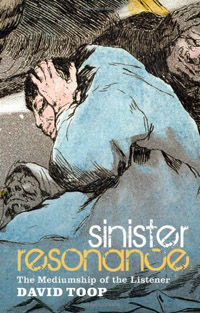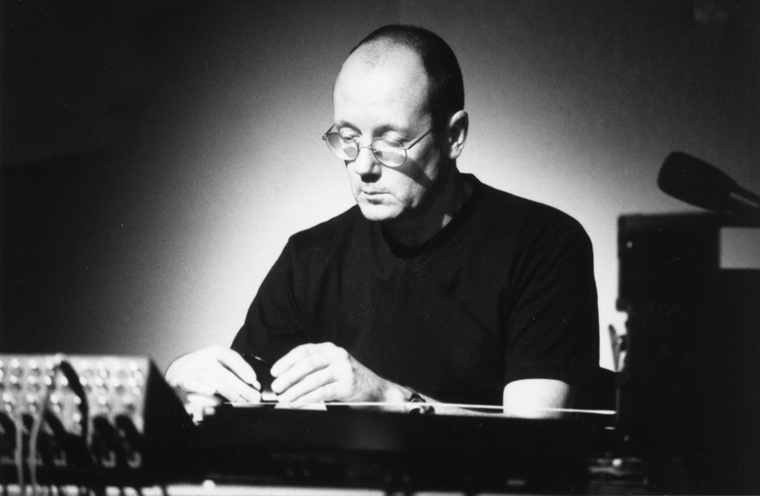 David Toop: Sinister Resonance (Continuum, 6/24/11)
David Toop: Sinister Resonance (Continuum, 6/24/11)
David Toop’s new book, Sinister Resonance, looks at the ubiquity and power of sound and silence in our lives, even if we rarely take note of it. What is it about a sudden noise in a darkened house, a lull in a conversation, or eavesdropping that quickens our pulse and plays on our emotions? This musician-writer sets out to enrich our understanding of what sound means in a primal, emotional sense.
Toop explains sound as something uncanny, even eerie, and generally of uncertain source. Sound is like a ghost — intangible, always just out of reach, impossible to pin down, a “present absence” or “absent presence,” tied to emotion and memory, uniting past and present. It’s an unconventional thesis, and his approach to the study of silence is appropriately academic, even methodical.
However, his evidence follows the interdisciplinary approach of media studies; Toop looks at every kind of book, film, and artwork imaginable and supports his claim with examples spanning two centuries. Nothing is off-limits, from Sigmund Freud and Old Masters to creaky old houses. In fact, it’s Freud’s theory of the uncanny that gets the most attention, in connecting our emotional response with the sensual data of sound. Sounds and silence possess the power to unnerve us, and their sudden appearance (or absence) is often eerie.
Other scientific theorists get their due as well, but it’s Toop’s own sporadic and incredibly private anecdotes that drive his point home. The reader assumes the role of Toop’s much-discussed cultural eavesdropper (he states at one point that all listening is, in fact, eavesdropping), and the imagined sounds of his stories resonate with us in powerful ways.
Toop’s innovative exploration of the use of sound in silent media, such as paintings, is particularly interesting. Although the title implies that the work deals with sounds, Toop explores silence as well, as sound’s natural counterpoint and source of considerable human anxiety.
His ghost thesis seems like a bigger stretch than the other material (a cultural auditory history through various art forms feels more like the type of pop literature we’ve seen in recent years). However, once Toop connects his thesis to the experience of sound in the classic ghost story, his arguments gain traction.
It’s doubtful that many people were chomping at the bit to know why the score to The Shining is so effective, but Toop makes a case for his work. Sound is underrated, in what he calls our “visuocentric” society. In the preface, he notes, “A profound engagement with sound runs through all aspects of human culture, and yet in many cases that engagement goes unrecognized.” Our focus is on what we can see, touch, and hold — and therefore understand.
Toop’s tone occasionally reaches the lyricism that he clearly craves, but too often it falls back on dry academic-speak. Sinister Resonance never claims to be an easy read, despite disarmingly quirky choices of source material. It could be, however, an invaluable resource to writers and painters looking to investigate and incorporate the sort of multisensory experience that Toop describes. Tedious at times but incredibly well researched, Sinister Resonance is a surprisingly thought-provoking work of pop-culture analysis.

